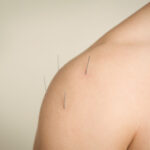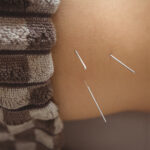Introduction to Acupuncture Needles
Acupuncture is an ancient practice rooted in Traditional Chinese Medicine (TCM) that relies on thin, sterile needles to stimulate specific points on the body. These ultra-fine needles are carefully inserted to influence energy flow, known as qi (pronounced “chee”), and promote healing.
Unlike hypodermic needles used for injections, acupuncture needles are:
- Extremely thin – often as fine as a human hair
- Flexible and painless – designed for gentle insertion
- Sterile and single-use – ensuring safety and hygiene
Acupuncture Needle Facts
- Diameter: Ranges from 0.12 mm to 0.35 mm (as thin as a human hair)
- Length: Varies from 8 mm to 125 mm, depending on the treatment area
- Material: Made of stainless steel for flexibility and durability
- Insertion: Often painless, with sensations of warmth, tingling, or light pressure
- Comparison: Acupuncture needles are much thinner than hypodermic needles, which range from 0.7 mm to 1.2 mm in thickness.
What Science Says About Acupuncture Needles
“Acupuncture needles have evolved over time, transitioning from materials like stone, ceramic, bamboo, bronze, iron, gold, and silver, to the stainless steel commonly used today.” – PMC Article
“The diameter of acupuncture needles typically ranges between 0.16 mm and 0.46 mm, with lengths varying from 13 mm to 130 mm. Thinner needles may require guide tubes for insertion due to their flexibility.” – Wikipedia
“When used in warm-needle acupuncture (WA), the needle’s thickness influences heat conduction. For instance, needles with diameters of 0.30 mm, 0.40 mm, and 0.50 mm have been studied to assess temperature changes at various tissue depths, affecting therapeutic outcomes.” – PMC Article
Recent findings suggest that acupuncture needles influence the nervous system, triggering the release of neurotransmitters and endorphins, which help relieve pain and regulate mood. This has led to acupuncture’s integration into mainstream healthcare as a complementary therapy.
Conclusion
Acupuncture is a time-tested therapeutic practice with a growing body of scientific support. Whether used for pain relief, stress management, or digestive health, it offers a holistic and non-invasive approach to wellness.
Key Takeaways:
- Acupuncture needles are thin, flexible, and nearly painless.
- They stimulate the nervous system, reduce pain, and improve well-being.
- Safety regulations ensure sterility, effectiveness, and minimal risk.
If you are considering acupuncture, consult with a licensed acupuncturist and explore reputable sources such as the World Health Organization (WHO) (WHO Website) for further information on its benefits and applications.
Looking for expert acupuncture in London Ontario? Our trusted acupuncturist, Tracey Li, is here to help.
She will address your health concerns with personalized treatments designed to alleviate pain, reduce stress, and restore balance.











